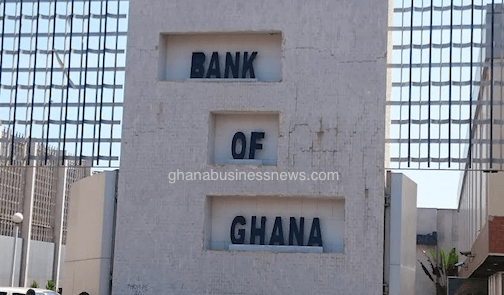Ghana banks increase credit to private sector, despite high levels of problem loans
 Despite a looming banking crisis in Ghana following economic decline by the end of 2016 and an increase in problem loan levels driven by large exposures to energy companies, for which unpaid government subsidies prevented scheduled bank loan repayments, Ghanaian banks have increased lending to the private sector, according to the Bank of Ghana.
Despite a looming banking crisis in Ghana following economic decline by the end of 2016 and an increase in problem loan levels driven by large exposures to energy companies, for which unpaid government subsidies prevented scheduled bank loan repayments, Ghanaian banks have increased lending to the private sector, according to the Bank of Ghana.
The ratings agency, Moody’s issued a report in February 2017, indicating that Ghana banks in addition to the problems of non-performing loans, are facing high asset risks. Moody’s pointed out that the banks are facing these risks, despite solid capital buffers, stable funding and an economic recovery expected in the country.
The Institute of Statistical, Social and Economic Research (ISSER), also warned that the performance of the country’s monetary sector in 2016 mainly driven by a decline in inflation, slower growth of credit to the banking sector and an increased lending risk are symptoms of a struggling economy and a looming banking crisis.
Presenting the 2017 post budget analysis in Accra, March 10, 2017, Dr Charles Godfred Ackah, Head of the Economics Division of ISSER, noted that, the year 2016 ended with a Monetary Policy rate of 25.5 per cent and an inflation rate of 15.4 per cent by the end of December 2016 with the decline mainly caused by non-food factors and a relative stability in the local currency.
He said credit to the private sector in the same year also recorded slower growth resulting from the tight monetary policy recording an annual growth of 22 per cent in 2016 compared to 26.1 per cent recorded in the preceding year.
According to him, lending risk continued to surge with growth in total outstanding credit to the private sector declining from 24.9 per cent in 2015 to 17.6 per cent in 2016.
“This development is quite worrying given that historically, financial intermediation has been low in Ghana compared to comparator economies. We need appropriate regulation of the financial system to achieve the twin goals of inclusive growth and financial stability,” he said.
But in its Monetary Policy Committee report issued on March 22, 2017 the Bank of Ghana said credit to the private sector and public institutions has gained some momentum.
“For the 12-month period to March 2017, credit to the private sector and public institutions increased by GH¢5 billion or 19.4 per cent year on year growth, compared with GH¢2.6 billion (11.2 per cent year on year growth) recorded for the same period in 2016,” the Governor, Dr. Ernest Addison told journalists.
The Governor said the private sector accounted for 86.1 per cent of the total credit flow. In real terms, credit to the private sector also showed a rebound, increasing by 5.9 per cent, on year-on-year basis, in March 2017 after contracting by 6.9 per cent same period last year, he said.
Broad Money (M2+) expanded in line with increased extension of credit to the private sector as real lending rates declined in response to the ease in the stance of monetary policy announced in March 2017, he said.
“The latest credit conditions survey by the Bank of Ghana conducted in April 2017 showed a general easing of credit conditions for enterprises and households. But credit for house purchases tightened in the first quarter of 2017,” he added.
By Emmanuel K. Dogbevi
Copyright ©2017 by Creative Imaginations Publicity
All rights reserved. This news item or any portion thereof may not be reproduced or used in any manner whatsoever without the express written permission of the publisher except for the use of brief quotations in reviews.
